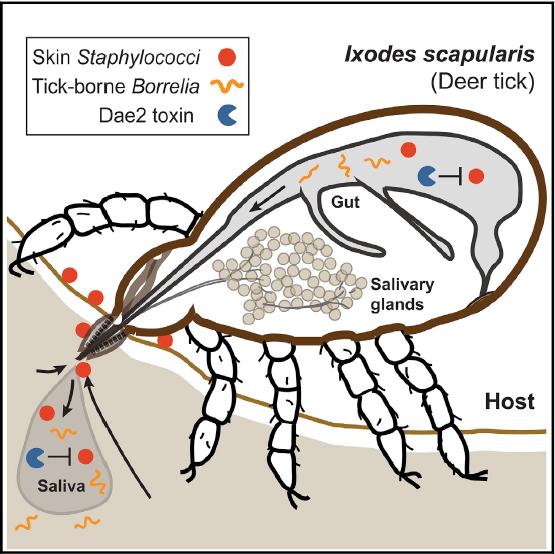Your skin should be toxic to ticks. Here's why it's not.
A toxin from an ancient bacteria helps ticks survive and transmit Lyme disease.

A toxin from an ancient bacteria helps ticks survive and transmit Lyme disease to the humans they feed on, a new study finds.
Eons of competition between bacteria have led many to develop antibacterial substances to survive; and through a process known as "horizontal gene transfer," some of these genes that carry instructions for creating these antibacterial substances hopped across species from bacteria to other types of organisms.
About 40 million years ago, the deer tick (Ixodes scapularis) acquired just such a potent antibacterial enzyme from an ancient bacteria, researchers reported in the journal Nature in 2015. For the new study, some of the same researchers sought to understand how this toxin — after years of evolving inside the tick — affects the critters.
Related: 5 things to know about the new tick species in the US
To do this, the researchers tested the toxin known as a domesticated amidase effector or Dae2 against different types of bacteria in the lab. They found that Dae2 efficiently killed mammalian skin microbes such as Staphylococci, but did not kill Borrelia burgdorferi, the bacteria that lives in some ticks and can cause Lyme disease when transmitted to humans. Lyme disease is a tick-borne illness that can cause fever, headache, fatigue and a bulls-eye-like skin rash, according to the Centers for Disease Control and Prevention (CDC).

They also found that the toxin is secreted into the tick's digestive system while the parasite is feeding, and from there passes from saliva to the site of the tick bite. When they blocked Dae2 in deer ticks and exposed them to bacteria that's found on human skin, the ticks started dying, Chou said in a statement.
In other words, this toxin allows ticks to safely feed on human and mammalian blood. This protection allows the ticks to spend a long time feeding, enough for the Lyme bacteria to move from the ticks to humans.
Sign up for the Live Science daily newsletter now
Get the world’s most fascinating discoveries delivered straight to your inbox.
"What's stable and harmonious for the ticks is bad for us, and what's stable and harmonious with our skin is bad for ticks," senior author Seemay Chou, a professor of biochemistry at University of California San Francisco, told Live Science.
It's the first time that researchers have identified a specific bacterial species that can harm ticks, Chou said. There's been increasing interest in trying to control vector-borne diseases — like malaria, which is carried by mosquitoes — by killing the vector rather than just the pathogen that causes the disease, she said. Such approaches are already being used to curb mosquito populations around the world. It could be "really interesting" to see if the same approach would work for tick-borne diseases, for instance, by engineering bacteria that's bad for ticks but not harmful to humans, Chou said.
Chou and her team hope to zoom in on what's happening on the skin at the actual site of a tick bite. "We think that there could be a dual role of these antimicrobials," Chou said. They could be both "regulating what's happening in the tick but also regulating what's happening in the host."
The findings were published Thursday (Dec. 10) in the journal Cell.
Originally published on Live Science.

Yasemin is a staff writer at Live Science, covering health, neuroscience and biology. Her work has appeared in Scientific American, Science and the San Jose Mercury News. She has a bachelor's degree in biomedical engineering from the University of Connecticut and a graduate certificate in science communication from the University of California, Santa Cruz.
Flu: Facts about seasonal influenza and bird flu
What is hantavirus? The rare but deadly respiratory illness spread by rodents










